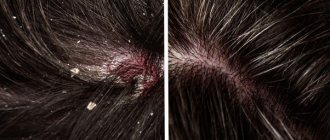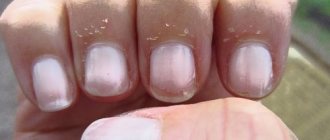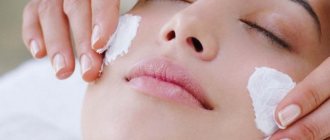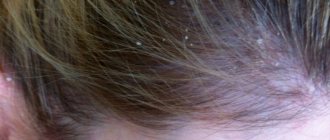A Guide to Home Phototherapy for Psoriasis
Phototherapy or light therapy may help reduce the symptoms of psoriasis.
Home phototherapy can be safe and effective for people with psoriasis if they follow their doctor's instructions for its use. Psoriasis is an autoimmune disease in which the immune system becomes oversensitive and attacks healthy skin cells. The attacking cells multiply faster than normal and form a rash of thick, inflamed plaques on the skin. These plaques usually have a flaky crust on top.
Phototherapy can be done on an outpatient basis in a clinic, or your doctor may prescribe a phototherapy unit for you to use at home. Research shows that home phototherapy can provide the same results as hospital treatment.
This article explains how phototherapy works, the different types of home phototherapy, and possible side effects.
What processes in cells are affected by ultraviolet light?
In the body of a patient with psoriasis, epithelial cells - keratinocytes - divide excessively and chaotically, which leads to the formation of plaques.
Cytokine - enlarged image
Scientists believe that one of the mechanisms of action of ultraviolet rays (spectrum B) is the effect directly on DNA molecules , activation of the transfer of genetic information from DNA to RNA. As a result, cell division stops and normal metabolism in keranocytes is restored.
In the body of a patient with psoriasis, of regulatory molecules - cytokines are impaired . Cytokines are responsible for:
- coordinated interaction of the immune, nervous and endocrine systems;
- cell survival;
- intercellular interaction;
- cell growth and separation into groups;
- destruction and “disposal” of cells.
Cytokines are pro-inflammatory (responsible for the body’s response to external stimuli) and anti-inflammatory (limit inflammation). In a healthy person, these two types are in balance, but in a patient with psoriasis, the balance and functions are disturbed .
UV rays are capable of transforming genetic information, restoring the functions of cytokines and their balance. The disease is treated at the cellular level , plaques disappear, and the skin becomes healthy.
What is phototherapy?
Phototherapy uses ultraviolet light to reduce swelling and slow the overproduction of skin cells caused by psoriasis. Ultraviolet light is invisible to the naked eye and penetrates the skin.
There are two types of UV radiation:
UV-A
This type of light can penetrate deeper into the skin than UVB. A person receiving UVA light treatment must sensitize their skin with a plant-based chemical called psoralen in order for the treatment to be effective.
UV-B
UVB light penetrates the outer layers of the skin and can cause sunburn. Phototherapy using UV-B light is effective on its own, without any chemicals.
Mechanism of influence of UV therapy
A quartz lamp for the treatment of psoriasis has several mechanisms of influence on the disease. These include:
- Neuro-reflex – consists of the influence of UV rays on skin receptors, through which healing impulses spread throughout the body.
- Physico-chemical - thanks to the generated energy, which is converted into heat, it promotes the restoration of skin cells.
- Photoelectric – affects cell membranes, improving their permeability.
- Pigmentation – improves the body’s ability to prevent the negative effects of external irritants.
Side effects
Phototherapy for psoriasis often causes sunburn reactions. In rare cases, this can also lead to blistering.
One 2022 study found that people who used home phototherapy experienced severe erythema, a skin reaction that causes a rash, more often than people treated in a hospital. However, blisters were more common among those treated in hospital.
Exposure to ultraviolet radiation can also increase the risk of skin cancer, so when using phototherapy it is important to follow your doctor's instructions and have your skin examined regularly.
Indications for use
Portable irradiators are quite convenient for home use. The most popular models:
- Dermalight;
- "Sun";
- Ultramig;
- Irradiating comb for scalp Ufit-V.
The choice depends on the localization of the process and, of course, the cost of the device.
Dermalight
An ultraviolet lamp for the treatment of psoriasis, Dermalight, costs about 10,000 rubles. You can also additionally purchase a comb for treating the scalp for 500 rubles.
When using the device on the skin of the body, the exposure time should not exceed 60 seconds for the first session and 4 minutes for regular use. The duration is increased gradually, observing the reaction of the skin.
For reference! All procedures are carried out wearing protective glasses!
Device "Sun"
A multifunctional device can be purchased at a price from 2,700 rubles to 3,600 rubles. A high-quality analogue of foreign devices, in no way inferior to them. Its spectrum of operation is from 180 to 400 nm, while the recommended range for psoriasis is 311 nm. The kit includes several attachments and safety glasses. The lamp can be used for quartzing rooms.
Ultramig
Narrowband ultraviolet lamp with a maximum range of 311 nm. Price 17,600 rub. The device is equipped with a Philips lamp, which is one of the best UV lamps for the treatment of psoriasis. A spare lamp can be purchased for RUB 2,700.
Irradiating comb Ufit-V
The use of quartz therapy has a positive effect not only on psoriatic formations, but also on the following groups of diseases and pathologies:
- dermatological – eczema, dermatitis;
- physical injuries - cuts, tears;
- gynecological;
- diseases of the musculoskeletal system;
- respiratory system – asthma, bronchitis;
- low immunity;
- otolaryngological – sinusitis, otitis media;
- vitamin D deficiency.
Despite the long-term and positive therapeutic effect, the use of a quartz lamp for psoriasis has a number of contraindications:
- active tuberculosis;
- hypertensive crisis;
- acute form of peptic ulcer;
- pathologies of the cardiovascular system;
- dilation of blood vessels;
- individual sensitivity to ultraviolet radiation;
- presence of cancer;
- features of the skin.
Does phototherapy work?
Phototherapy does not cure psoriasis, but it can reduce symptoms.
According to some data, in special cases, phototherapy can completely clear the skin. In other cases, it may simply reduce the appearance of psoriasis plaques. Doctors recommend phototherapy only if other treatments, such as topical steroid creams, have failed to improve symptoms.
A 2022 study compared the results of phototherapy treatment at home with the results of treatment in hospitals. The researchers used the Psoriasis Area and Severity Index (PASI), which measures the intensity and extent of an outbreak, as a baseline. Their results showed that 40.7% of those treated at home scored a PASI score of 75 after 46 treatments, compared with 41.7% of people treated in a hospital. A PASI score of 75 corresponds to a 75% reduction in symptoms.
The study also found that people were generally more satisfied with treatment when receiving it at home.
Phototherapy on dark skin
Research into the effectiveness of phototherapy for different skin tones has been limited, but research is currently ongoing. According to the National Psoriasis Foundation, phototherapy can be very effective in reducing psoriasis symptoms in people with dark skin, who often have thicker skin lesions.
However, such patients may find that phototherapy may leave spots on their skin. This is because treatment can further accentuate the hyper- or hypopigmentation that psoriasis can cause.
Will ultraviolet help you?
This principle of treating psoriasis is used in the Dermalight lamp, which operates with ultraviolet 311 nm (spectrum B).
The effectiveness of the method has been proven by tests. Out of 100 people (using the Dermalight lamp), 97 get rid of psoriasis.
This method is suitable for you if:
- the disease is just beginning;
- the disease progresses, but the spots cover no more than 20% of the skin;
The Dermalight lamp treats the following types of psoriasis:
Dermalight 311 nm lamp
- psoriasis of the scalp;
- palmoplantar psoriasis;
- vulgar psoriasis - up to 20% of the body area;
- seborrheic psoriasis.
Can be used by pregnant women and children from 3 years of age.
How long does this procedure take?
Phototherapy is usually three sessions per week for 4 weeks to 3 months. Research shows that phototherapy more than three times a week provides little benefit, although it does expose the patient to an increased risk of side effects such as rash.
Some people can only do two classes a week. According to a study published in the Journal of the American Academy of Dermatology, patients who received two phototherapy sessions per week saw their psoriasis symptoms resolve in an average of 88 days, compared with 58 days for those who received three sessions per week.
After the initial treatment period, your doctor may recommend ongoing weekly treatments to keep your skin clear.
At-home phototherapy machines reduce the need to visit a clinic or specialist's office, but doctors still recommend frequent psoriasis screenings.
Precautions and additional recommendations
When undergoing a course of treatment, it is extremely important not to violate the norms and instructions of the doctor and follow the safety rules:
- to minimize the impact on the retina, you must wear safety glasses;
- it is important to cover all areas of healthy skin or treat them with sunscreen with a high degree of protection, paying special attention to the groin area, shoulders, face;
- to avoid burns, you must follow safety precautions for using the lamp;
- do not forget about contraindications.
Before the procedure, you need to cleanse the skin of impurities. After irradiation, the skin is moisturized with cream or a topical remedy for psoriasis is applied.
If all doctor's recommendations are followed, ultraviolet irradiation shows high efficiency. In 70-90% of patients there is a noticeable decrease in the intensity of symptoms of the disease.
Psoriasis is an incurable disease that mainly affects the skin. With the right therapy, stable, long-term remission can be achieved. One of the therapeutic methods for psoriasis is light therapy. The essence of the lamp for psoriasis is the effect of a stream of ultraviolet rays on the skin affected by the disease. This method has almost no contraindications. To be effective in the treatment of psoriasis, it is recommended to use phototherapy along with drug treatment.
How to do phototherapy at home?
Your doctor will explain how to use the phototherapy machine at home. Be sure to follow their instructions as UV rays can damage the skin, causing premature aging, sunburn and skin cancer.
Some doctors begin phototherapy in a hospital setting before recommending that the patient continue treatment at home. Your doctor will explain the importance of protecting sensitive areas of the body, such as the eyes and genitals, and explain when to use moisturizers. He will also explain how to position the device so that it targets the appropriate area and how far away from the device the patient should stand.
The doctor will evaluate the medical history and note any medications the patient is taking, including supplements and herbs. Depending on your skin type, doctors will recommend a starting dose for the first few treatments and gradually increase it.
You should maintain at least a 24-hour interval between sessions and reduce the exposure time if you regularly skip treatment.
Safety measures or eliminating harm
Household UV lamps produce minimal amounts of radiation. If you follow the manufacturer's recommendations specified in the instructions for the device, and the recommendations of doctors, there will be no harm to the body.
Uncontrolled use of the lamp can lead to exacerbation of cardiovascular diseases, burns and even the formation of malignant tumors.
General rules:
- Use the ultraviolet lamp as intended! Otherwise, not only will there be no benefit, but you may even harm your health.
- Be sure to use safety glasses! They need to be purchased if they are not included with the device!
- After using the emitter, it is recommended to ventilate the room.
- For certain diseases (heart disease, kidney disease, liver disease, blood disease), the use of UV lamps is strictly prohibited. Before using the devices, consult your doctor.
Using an ultraviolet lamp at home, the desired effect should not always be expected quickly. For example, improvement in the treatment of acute rhinitis can be noticeable after just a couple of procedures, but to treat psoriasis or get a beautiful tan, you need to be patient for several weeks.
Types of irradiators
To treat psoriasis, light therapy uses ultraviolet radiation of the desired wavelength. Under the influence of irradiation, the intensive growth of skin cells and the exfoliation process are inhibited. For the effectiveness of psoriasis treatment, regular use of an ultraviolet lamp is recommended. Phototherapy should only be carried out as prescribed and under the strict supervision of a doctor.
Taking into account the range, all ultraviolet rays are classified:
- A-band and long-wave;
- B band and medium wave;
- C band and shortwave.
Many years of research have proven the safety and effectiveness of the 311 nm wave. It practically does not provoke redness of the skin.
An ultraviolet lamp can be used to treat psoriasis at home and in hospital settings.
The following UV lamps are usually used to treat psoriasis:
- Using broadband radiation and A-band beams with a length of 350 nm.
- Using narrowband radiation and spectrum B rays at 311 nm.
- With a combined technique using medium-wave and long-wave rays.
The distinctive characteristics of ultraviolet lamps are listed in the table.
Broadband technique
Narrowband irradiation
Combined technique
The affected areas with keratinized skin prevent the penetration of ultraviolet rays. For this reason, such areas should be treated with a keratolytic agent before the procedure. Course duration is 30 sessions
The course of treatment consists of 3 sessions, which are carried out over 7 days. Ultraviolet waves of this spectrum do not change the cellular metabolism of healthy skin areas and do not cause dyshidrosis. These lamps are effective for the treatment of psoriasis that affects only small areas of the body
Effectively used for psoriasis that affects large areas of the body. To neutralize the negative effects of large doses of ultraviolet radiation on the body, the doctor prescribes topical medications that nourish and moisturize the skin. Topical products should only be selected by a doctor based on the results of skin sensitivity tests
The doctor will individually select which ultraviolet lamp will be effective for the treatment of psoriasis.











